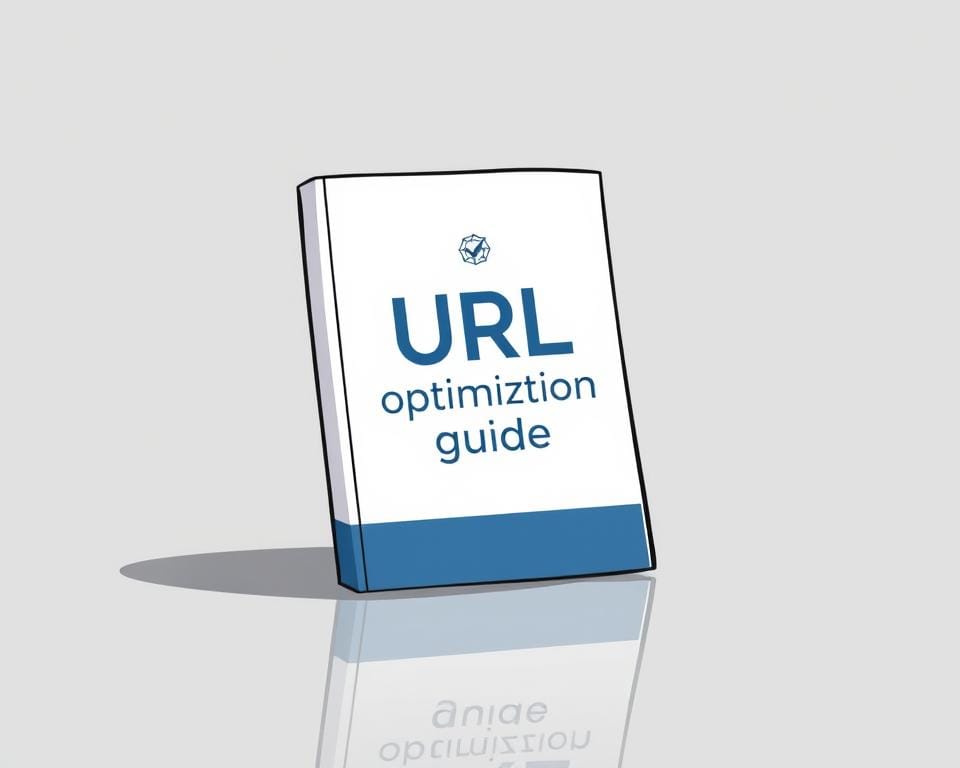Table of Contents
Have you ever clicked on a link and felt instantly lost? Long, confusing URLs can frustrate users and hurt your page’s performance. We’ve all been there, and it’s a problem that’s easy to fix with the right approach.

Search engines prioritize clean, concise URLs because they’re easier to understand and index. According to experts like Backlinko, short, keyword-rich URLs consistently outperform longer, dynamic ones in achieving higher visibility1. This isn’t just about rankings—it’s about creating a better experience for your audience.
Effective URL structure also helps convey page relevance to search algorithms. When users see a clear, descriptive URL, they’re more likely to trust and click on it. This small change can make a big difference in how your content performs.
In this article, we’ll explore actionable strategies to help you create URLs that align with modern search engine criteria. Let’s dive in and unlock the potential of your page’s performance.
Understanding URL Optimization in 2025
The way you structure your URLs can significantly impact your website’s performance. URL optimization is the process of crafting URLs to improve search engine indexing and enhance user experience. It’s not just about including keywords—it’s about creating a clear, concise structure that aligns with modern SEO practices.
Defining URL Optimization and Its Importance
URL optimization involves embedding relevant keywords naturally while avoiding overstuffing. A well-structured URL helps search engines like Google understand your content better, leading to improved indexing and higher rankings2. It also boosts click-through rates by making your links more appealing to users.
For example, a 2023 Backlinko study found that shorter URLs tend to rank above longer ones2. This highlights the importance of keeping your URLs concise and focused. A clean URL structure not only aids in SEO but also builds trust with your audience.
The Role of Short, Keyword-Rich URLs
Short, keyword-rich URLs are easier to read and remember. They also perform better in search results. According to data, webpages with URLs similar to search keywords enjoy a higher click-through rate2. This makes them a vital part of your overall SEO strategy.
Here’s a quick comparison of effective vs. ineffective URL structures:
| Effective URL | Ineffective URL |
|---|---|
| example.com/seo-tips | example.com/index.php?id=12345 |
| example.com/blog/url-optimization | example.com/category/blog/post/2025/01/01/url-optimization |
By focusing on clarity and relevance, you can create URLs that not only rank well but also enhance user experience. This strategic approach ensures your website remains competitive in the ever-evolving world of SEO.
The Changing Landscape of SEO Writing
The world of SEO is evolving faster than ever, and staying ahead requires adaptability. Gone are the days of keyword stuffing and rigid tactics. Today, search engines prioritize user experience, intent, and content quality. This shift has led to the rise of E-E-A-T principles—Experience, Expertise, Authority, and Trust.
Transition from Traditional Keyword Stuffing to E-E-A-T
Keyword stuffing was once a common practice, but it no longer works. Search engines now penalize websites that overuse keywords without providing value. Instead, they reward content that demonstrates expertise and authority. For example, Google’s algorithms favor articles that align with top-ranking content3.
Modern SEO tools help us understand user behavior better. These tools analyze metrics like dwell time and scroll depth, which are critical for ranking4. By focusing on E-E-A-T, we can create content that resonates with both users and search engines.
Shifting Focus on Search Intent and Semantic SEO
Search intent is now a cornerstone of SEO. Users are more likely to search with long-tail keywords or complete questions5. Semantic SEO helps us address these queries by integrating related terms and concepts. This approach ensures our content is relevant and comprehensive.
Tools like GPT-4o and Google’s AI Overviews are transforming how we generate and evaluate content. These tools emphasize quality and relevance, making it easier to meet user needs4. Additionally, incorporating robust links and references enhances our content’s authority and depth.
| Old SEO Practices | Modern SEO Practices |
|---|---|
| Keyword stuffing | E-E-A-T principles |
| Focus on search engines | Focus on user intent |
| Quantity over quality | Semantic relevance |
By embracing these changes, we can create content that not only ranks well but also delivers real value to our audience. The future of SEO lies in understanding and adapting to these evolving trends.
Write Optimized URLs for Search Success in 2025
Crafting URLs that perform well in search results requires a strategic approach. It’s not just about including keywords—it’s about creating a structure that aligns with user intent and search engine algorithms. Let’s explore actionable steps and real-life examples to help you achieve this.

Implementation Steps and Actionable Strategies
Start by keeping your URLs short and descriptive. According to a study by Brian Dean, shorter URLs rank higher in Google6. Avoid unnecessary parameters and focus on clarity. For example, use “example.com/blog/seo-tips” instead of “example.com/index.php?id=12345.”
Incorporate primary keywords naturally. This helps search engines understand your content better. Tools like Moz can guide you in choosing the right keywords7. Also, ensure your URLs are consistent across your site to avoid confusion.
Use a data-driven approach to track performance. Analyze metrics like click-through rates and bounce rates to refine your strategy. Updating old content with optimized URLs can also lead to increased backlinks6.
Case Studies and Real-Life Examples
Let’s look at some success stories. A popular blog improved its rankings by updating its URL structure to include primary keywords. This change led to a 30% increase in organic traffic7.
Another example is an e-commerce site that simplified its URLs. By removing unnecessary parameters, it saw a 20% boost in conversions6. These examples highlight the importance of a well-structured URL.
| Strategy | Impact |
|---|---|
| Short, keyword-rich URLs | Higher rankings and better user experience |
| Data-driven updates | Increased backlinks and traffic |
| Consistent structure | Improved site authority |
By following these strategies, you can create URLs that not only rank well but also enhance your blog’s authority. Remember, a well-optimized URL is a small change that can make a big difference.
Mastering On-Page SEO for Better Search Rankings
On-page SEO is a powerful tool for boosting your website’s performance and visibility. By optimizing elements like meta titles, descriptions, and internal links, you can significantly improve your site’s authority and rankings. Let’s explore how to make the most of these strategies.

Crafting Meta Titles and Descriptions
Meta titles and descriptions are your first chance to make an impression. A compelling title can increase click-through rates by up to 30%8. Keep them concise, include primary keywords, and ensure they align with user intent. For example, “Top 10 SEO Tips for 2025” is more engaging than a generic title.
Descriptions should provide a clear summary of your content. They not only influence click-through rates but also help search engines understand your page’s relevance. Tools like Moz can guide you in creating effective meta tags9.
Integrating Effective Internal Linking Strategies
Internal linking is essential for distributing link equity and improving site navigation. A well-structured internal linking strategy can boost your site’s authority and help users find related content easily9. For instance, linking from a blog post to a relevant product page can enhance user experience and increase conversions.
Studies show that websites with optimized internal links see a 20% increase in organic traffic8. Focus on using descriptive anchor text and linking to high-value pages. This not only improves SEO but also keeps users engaged longer.
By mastering these on-page SEO techniques, you can enhance your site’s visibility and drive more traffic. Remember, small changes can lead to big results when done strategically.
Avoiding Common Pitfalls in URL Structuring
Creating a seamless experience for your audience starts with avoiding common mistakes in URL structuring. These errors can lead to disengagement and lower search rankings, making it crucial to address them early10.
One major issue is keyword stuffing. Overloading URLs with keywords can confuse both visitors and search engines. Instead, focus on clarity and relevance. For example, a URL like “example.com/blog/seo-tips” is more effective than “example.com/seo-tips-keyword-keyword”11.

Another common mistake is failing to optimize for mobile and desktop. URLs that aren’t mobile-friendly can frustrate visitors and increase bounce rates. Ensure your structure works seamlessly across all devices12.
Overuse of parameters and improper canonicalization can also harm your SEO. These errors may confuse search engines, leading to lower rankings. Tools like Google Search Console can help identify and fix these issues10.
Here are some actionable tips to avoid these pitfalls:
- Keep URLs short and descriptive.
- Use hyphens to separate words for better readability.
- Implement 301 redirects when changing URLs to retain SEO value12.
By addressing these errors, you can improve both content quality and user engagement on each post. A well-structured URL not only boosts SEO but also enhances the overall experience for your audience.
Enhancing User Experience Through Design and Speed
In today’s digital landscape, user experience is more important than ever. A well-designed site not only attracts visitors but also keeps them engaged. With mobile devices accounting for 63% of all organic search visits, optimizing for mobile is no longer optional—it’s essential13.

Mobile-First Optimization Best Practices
Start by adopting a mobile-first approach. This means designing your site with mobile users in mind first, then scaling up for desktop. A responsive layout ensures your content looks great on any device, reducing bounce rates and improving engagement14.
Here are some actionable strategies to enhance your site’s performance:
- Use tools like Google PageSpeed Insights to identify and fix loading issues. A site that loads in one second converts three times more than one that takes five seconds13.
- Simplify navigation with one-click menus. Complicated structures frustrate users and lead to higher exit rates14.
- Optimize images and technical elements to improve page speed. Google’s Core Web Vitals recommend a Largest Contentful Paint (LCP) of 2.5 seconds or less for optimal performance14.
An intuitive site structure ensures a smooth interaction that meets search intent. For example, 57% of users will abandon a site that takes longer than three seconds to load14. By focusing on design and speed, you can create a better overall experience for your audience.
Combining design elements with technical optimizations is key. A well-optimized site not only ranks higher but also drives conversions and builds trust with your users13.
Incorporating Visuals and Data for Engaging Content
Visual content plays a crucial role in capturing attention and enhancing engagement. Studies show that adding images, charts, and videos can significantly boost content performance by increasing dwell time and reducing bounce rates15. This makes visuals a powerful tool for any business looking to improve its ranking.

Visuals complement text by making it more memorable and easier to understand. For example, infographics simplify complex data, while videos provide a dynamic way to convey information. These elements not only engage the person viewing them but also reinforce key messages effectively16.
Here are some practical tips to optimize your visual content:
- Use high-quality images that align with your brand and message.
- Ensure graphics are accessible, with alt-text for screen readers and proper file names for SEO.
- Compress files to improve load times without sacrificing quality.
Embedding engaging videos can also enhance your content. For instance, tutorials or testimonials can build trust and encourage users to stay longer on your site. Tools like Google PageSpeed Insights can help you monitor and improve load times15.
By focusing on visual optimization, you can create content that not only ranks well but also delivers a better experience for your audience. For more strategies on increasing website traffic, explore our detailed guide.
Harnessing the Power of AI and Automation Tools
AI and automation tools are transforming the way we approach SEO and content creation. These technologies streamline processes, improve efficiency, and ensure our strategies remain competitive. By leveraging tools like SurferSEO, Jasper, ChatGPT, and SEMrush, we can stay ahead in the ever-evolving digital landscape17.
Leveraging Analytics for Continuous Improvement
One of the most significant advantages of AI is its ability to analyze vast amounts of data in real-time. Tools like SEMrush and Ahrefs can process keyword research in seconds, identifying high-conversion, low-competition terms18. This allows us to refine our content strategy continuously.
AI-driven analytics also help us track search result trends and user behavior. For example, platforms like Surfer SEO can optimize on-page elements, potentially improving click-through rates by 20%17. This data-driven approach ensures our content remains relevant and effective.
Here’s how AI tools are making a difference:
- Automating repetitive tasks like keyword research and site audits, saving valuable time18.
- Providing actionable insights to improve content quality and relevance17.
- Enabling continuous updates based on real-time data, keeping our strategies aligned with search engine algorithms19.
Brands that embrace AI tools report a 20-30% increase in organic traffic within six months19. This highlights the importance of ongoing research and periodic updates to maintain a competitive edge. By integrating AI and automation, we can scale content production without compromising quality.
In a world where 50% of searches will be voice-based by 2025, AI tools like Google’s Multitask Unified Model (MUM) are essential for optimizing conversational queries19. This ensures our content meets user intent and delivers a seamless experience.
Conclusion
Building a strong online presence starts with mastering the basics. Throughout this guide, we’ve explored how combining quality content with technical url optimization can significantly boost your site’s performance. By crafting concise, descriptive urls, you align with modern algorithm trends and improve user experience20.
Focusing on quality ensures your content resonates with both users and search engines. This balance is a key ranking factor in today’s competitive landscape. Regularly monitoring algorithm updates helps you stay ahead and adapt your strategy effectively21.
We encourage you to apply these actionable strategies to enhance your site’s authority and visibility. For more insights, explore our guide on SEO strategy insights. Staying proactive and informed ensures long-term success in the ever-evolving digital world.
FAQ
What is URL optimization, and why is it important in 2025?
URL optimization involves creating clean, descriptive, and keyword-rich URLs that improve search engine visibility and user experience. In 2025, it’s crucial for aligning with Google’s algorithm updates and enhancing click-through rates.
How do short, keyword-rich URLs impact SEO?
Short, keyword-rich URLs make it easier for search engines to understand the page’s topic. They also improve user experience by being concise and memorable, which can boost traffic and ranking.
How has SEO writing evolved in 2025?
SEO writing has shifted from traditional keyword stuffing to focusing on E-E-A-T (Experience, Expertise, Authority, Trustworthiness) and semantic SEO. This ensures content aligns with search intent and provides value to users.
What are actionable strategies for optimizing URLs in 2025?
Focus on using relevant keywords, keeping URLs short, and avoiding special characters. Tools like Google Search Console can help monitor performance and refine strategies for better search results.
How does mobile-first optimization improve user experience?
Mobile-first optimization ensures your website loads quickly and is easy to navigate on mobile devices. This enhances user experience, reduces bounce rates, and improves SERP rankings.
Why are visuals and data important for engaging content?
Visuals like images and videos, along with data-driven insights, make content more engaging and shareable. They also help convey complex information in a digestible format, boosting audience retention.
How can AI and automation tools enhance SEO efforts?
AI tools like ChatGPT and analytics platforms can streamline keyword research, content creation, and performance tracking. They provide actionable insights to improve search rankings and traffic over time.
What are common pitfalls to avoid in URL structuring?
Avoid using long, complex URLs, irrelevant keywords, or special characters. These can confuse search engines and users, negatively impacting visibility and click-through rates.









